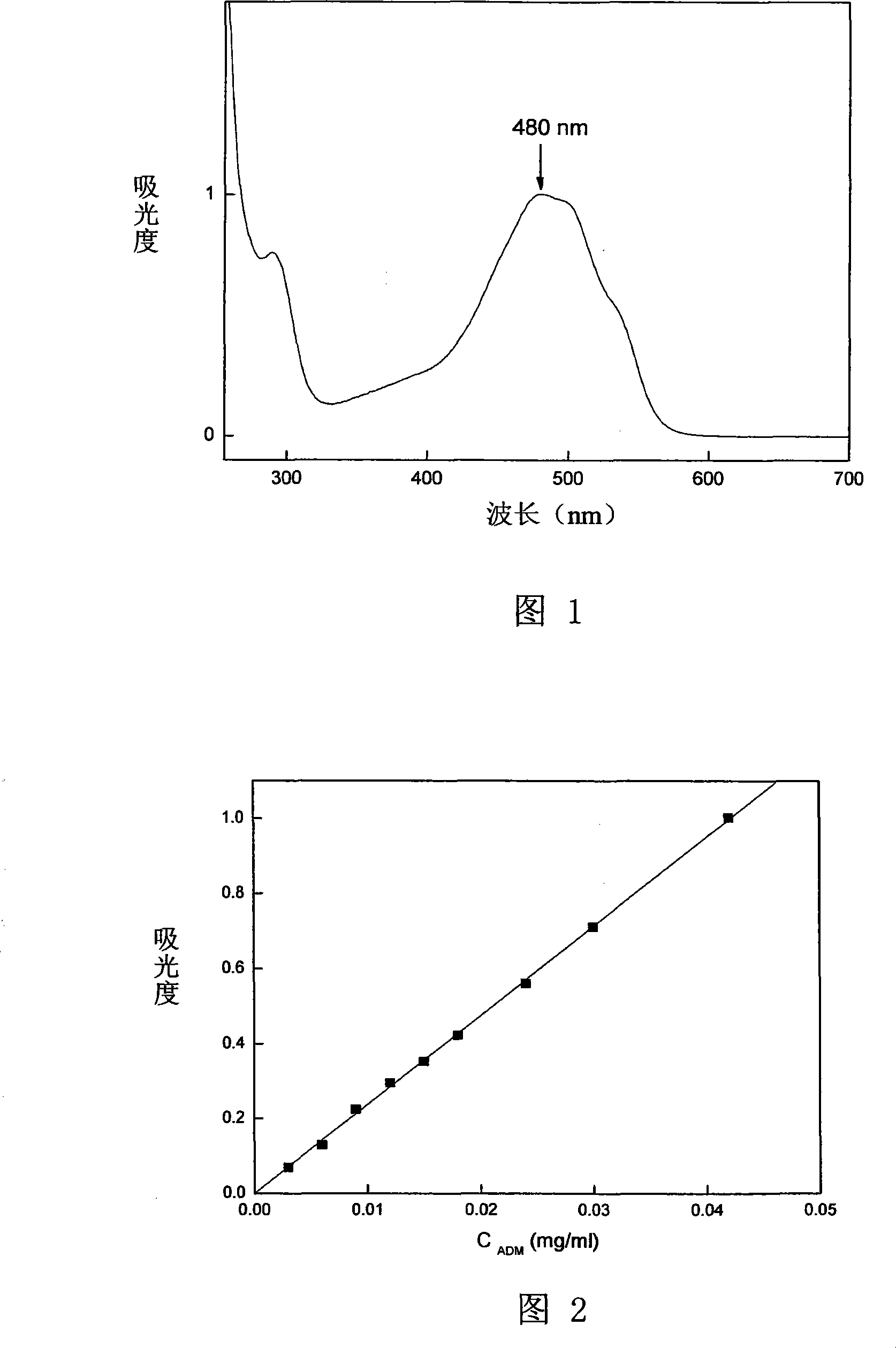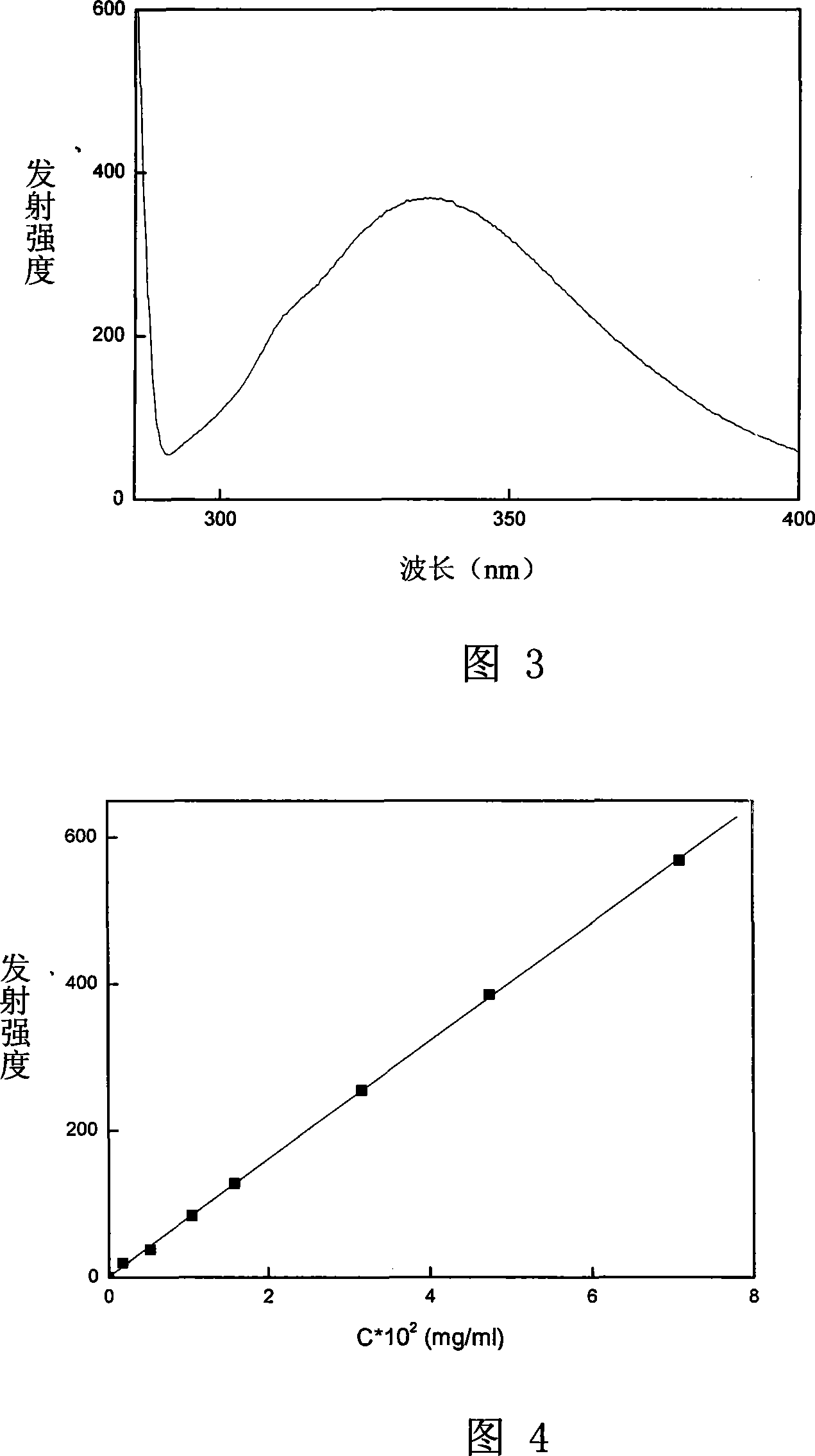Method for measuring drug-loading rate of bacteria nano magnetosomes
A nano-magnetic and drug-loading technology, applied in color/spectral characteristic measurement, fluorescence/phosphorescence, material excitation analysis, etc., can solve problems such as drug decomposition and accurate determination of drug loading
- Summary
- Abstract
- Description
- Claims
- Application Information
AI Technical Summary
Problems solved by technology
Method used
Image
Examples
Embodiment 1
[0022] Example 1: The amount of anticancer drug doxorubicin (ADM) loaded on bacterial nano-magnetosomes (BMP) was determined by ultraviolet spectroscopy.
[0023] (1) Prepare a standard solution of doxorubicin: accurately weigh 0.02 g of doxorubicin, dissolve it in pure water, and prepare a standard solution in a 25 ml volumetric flask. Pipette different volumes of the above-mentioned doxorubicin standard solution in a 25ml volumetric flask, add water to dilute to the mark, and accurately prepare a series of doxorubicin standard solutions with known concentrations.
[0024] (2) Establish the standard working curve of the contained drug: use pure water as a reference, measure the ultraviolet scanning spectrum of the above-mentioned doxorubicin standard solution, and obtain its ultraviolet spectrum as shown in Figure 1. According to Figure 1, it can be determined that doxorubicin has the maximum absorption wavelength λ in pure aqueous solution max 480nm. Measure the absorbance...
Embodiment 2
[0030] Example 2: Detection of anti-CEA content of monoclonal antibody carried by bacterial nano-magnetosomes by fluorescence spectroscopy.
[0031] (1) Prepare anti-CEA standard solution: add phosphate buffer solution to prepare a series of anti-CEA standard solutions with known accurate concentrations.
[0032] (2) Establishing the standard working curve of anti-CEA: measure the fluorescence emission spectrum of the above-mentioned anti-CEA standard solution, and obtain the fluorescence emission spectrum as shown in FIG. 3 . Determine its maximum emission wavelength λ max 336nm. Measure the fluorescence emission intensity values at 336 nm of the above-mentioned series of anti-CEA solutions with known accurate concentrations, and make the standard working curve as shown in FIG. 4 . Determine its regression equation as I=8.047*10 3* c. W is the absorbance value, and C is the concentration of the anti-CEA standard solution, that is, the absorbance value of the solution is...
Embodiment 3
[0037] Embodiment 3: Precision experiment
[0038] Taking fluorescence spectroscopy as an example, the same batch of anti-CEA solution and glutaraldehyde-modified bacterial nano-magnetosomes were subjected to parallel experiments under the same operating conditions as described above, and the bacterial nano-magnetic The amount of linked anti-CEA in the body, the results are shown in Table 1 below. This result shows that the detection method of the present invention can meet the ideal precision requirement.
[0039] Table 1 Results of precision experiments
[0040] Experiment number
[0041] Table 1 shows that the same batch of raw materials has been tested six times in parallel, and the error of drug loading measured is within the allowable range.
PUM
| Property | Measurement | Unit |
|---|---|---|
| particle diameter | aaaaa | aaaaa |
| particle diameter | aaaaa | aaaaa |
| absorption wavelength | aaaaa | aaaaa |
Abstract
Description
Claims
Application Information
 Login to View More
Login to View More - R&D
- Intellectual Property
- Life Sciences
- Materials
- Tech Scout
- Unparalleled Data Quality
- Higher Quality Content
- 60% Fewer Hallucinations
Browse by: Latest US Patents, China's latest patents, Technical Efficacy Thesaurus, Application Domain, Technology Topic, Popular Technical Reports.
© 2025 PatSnap. All rights reserved.Legal|Privacy policy|Modern Slavery Act Transparency Statement|Sitemap|About US| Contact US: help@patsnap.com


